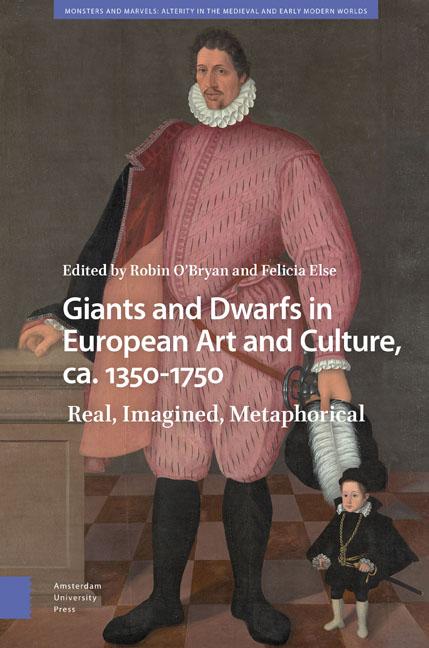4 - A Champion large of portratour: Robert the Bruce as “Giant” in Anti-Tudor Propaganda
Published online by Cambridge University Press: 13 April 2024
Summary
Abstract
The depiction of King Robert the Bruce that welcomed James IV's queen, Margaret Tudor, into Aberdeen in 1511, was described by poet William Dunbar as “supremely awe-inspiring, physically powerful, and [represented] with a massive physique.” An analysis of the role of giant performers in early modern European festivals and in British folklore and literature offers new insight into the Bruce's appearance and function specifically as a giant, whose confrontational, untamed physicality stood for Scotland's claim of antique individuality, cultural divergence, and military superiority over England. The giant's role as a native, bellicose defender was challenged by James IV's marital alliance with the Tudor dynasty, and the performative giants’ narrative would be reframed within the bounds of the upcoming pan-British world.
Keywords: William Dunbar, Margaret Tudor, James IV, Scotland, England, triumphal entries
In May 1511, Margaret Tudor (1489–1541), queen of James IV of Scotland (1473–1513), was welcomed into the royal burgh of Aberdeen with a visually stunning triumphal entry. The commemorative poem Blyth Aberdein (Rejoice Aberdeen, 1511) by court poet William Dunbar (1460–1520) is the only detailed account of the entry and it mentions the oversized figure of a giant among the pageants and spectacles devised by the civic organizers. In Dunbar's words, “And next the Bruce, who was always fearless in battle / [is called and] comes forward riding as a crowned King / supremely aweinspiring, physically powerful, and [represented] with a massive physique / as a renowned, fearsome, almighty champion.” The large-bodied character was the warrior nobleman Robert the Bruce (1274–1329), who led the Scots to victory in the First War of Scottish Independence (1296–1328) against England before being crowned king in 1306. The Bruce thus came to represent Scottish proud national identity and the right to self-government, and the royal House of Stewart, of which James IV himself was part, descended directly from the Bruce.
Scholars of Scottish spectacle have acknowledged that the Bruce as he appeared in Aberdeen in 1511 was a giant, rationalizing his size as representative of his towering role in Scottish identity, as a larger-than-life national hero.
- Type
- Chapter
- Information
- Giants and Dwarfs in European Art and Culture, c. 1350-1750Real, Imagined, Metaphorical, pp. 155 - 182Publisher: Amsterdam University PressPrint publication year: 2024



